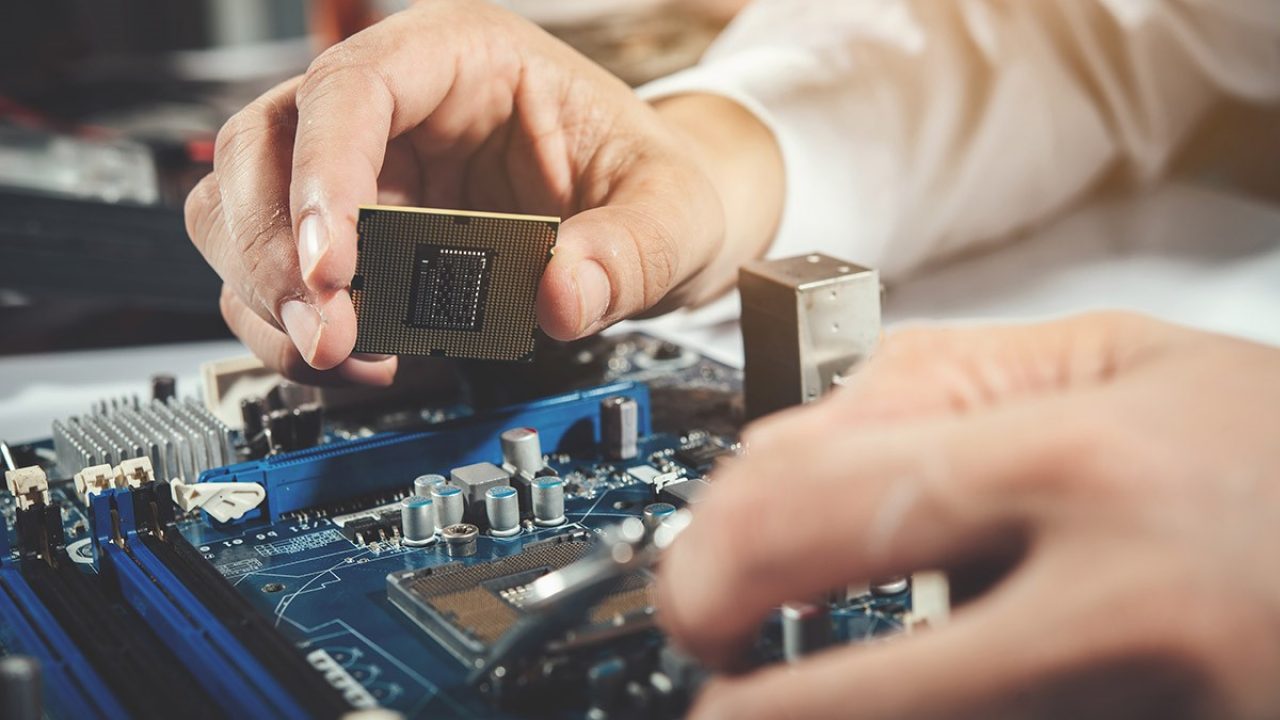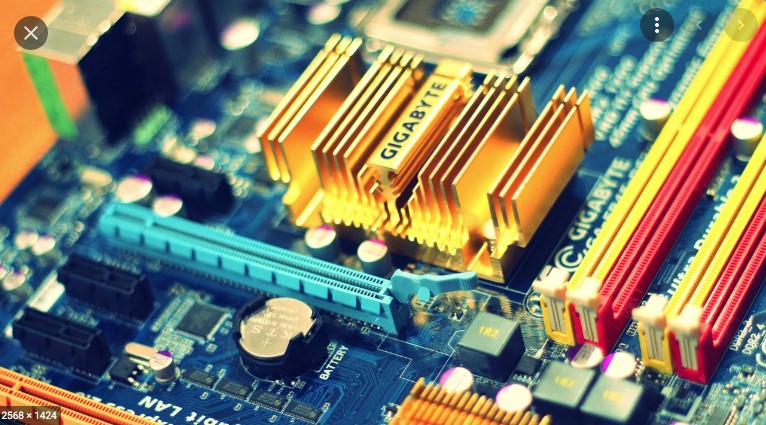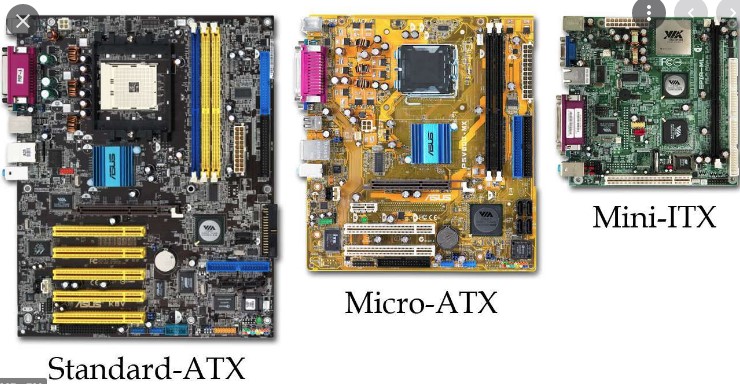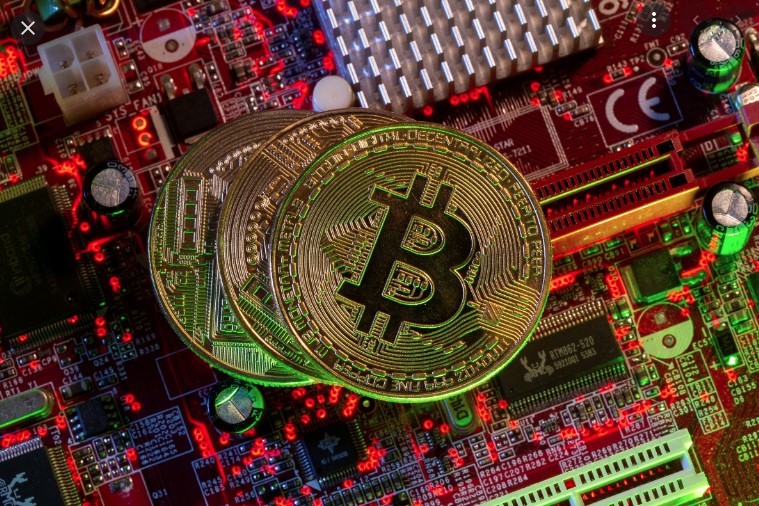How to Choose a Motherboard

The motherboard is an integral part of your computer. Often described as the circulatory system, it’s an essential component of PC design. As it interfaces with all other components, nothing else would work without it. The choice of motherboard determines how powerful your PC is and how powerful it can eventually become.
This article discusses what you need to consider when choosing the best motherboard for your gaming, cryptocurrency mining, and PC requirements.

What to Know Before Buying a Motherboard
What are some of the questions you’ll need answers to before looking at motherboards? Before selecting a motherboard that fits your current and future desktop PC needs, here are some things to consider.
CPU
What CPU chip will you use, AMD or Intel? You’ll need to decide this beforehand since the motherboard you choose will accommodate the right processor socket for the chip. Both processors are super powerful and cater to moderate gaming, web browsing, and performance.
In general, understanding which socket and chipsets would fit the motherboard you have in mind is key. Different chipsets will have elements that vary, depending on the RAM, GPU, etc.
RAM
How many RAM modules will you be using? The board you choose will need enough slots to accommodate the RAM you’d like to use now and in the future.
Expansion Plans
If you want to upgrade your build by adding additional modules, you’ll need to go for a motherboard that has that capability.
GPU Support
Your graphics card needs to support the motherboard you plan to attach for good visual displays and performance. Also, knowing how many graphics cards your motherboard can handle smoothly is essential if you wish to boost the power.
Motherboard Size
What size will you require the board to be? Out of the four main sizes, the ATX is the standard and caters to a full range of features. The Micro ATX is slightly smaller and offers fewer expansion, RAM slots, and features.
The larger the motherboard, the more components it can support and the more efficiently it adapts to the CPU.
Storage
The storage connectors are another important element of your board. You’ll need to be clear on the different types of external and internal connectors you’ll want to use. Whatever the storage, be sure to check that your potential motherboard can handle it, in addition to the data you’ll be storing.
Features
What features would you want access to? Many motherboards will have built-in features, saving you the bother of purchasing expansion cards. The best motherboards include Wi-Fi and Bluetooth capabilities, but these boards are slightly pricier.
SATA Ports
SATA ports allow connections for optical and storage drives like HDD or SSD. Ensure the motherboard has the ports you’ll need to connect your drives. Check whether it supports the standard SATA 6 gigabytes – SATA 3.0. Also, think about any other peripherals you may need to connect, like USB 3.0.
PCI Slots
These slots enable the connection of expansion cards. Depending on how you’ll use your PC, you’ll need to consider whether your motherboard is equipped with enough slots to suit your needs.
Motherboards also offer basic PCI slots and express slots for sound cards and Wi-Fi adaptors.
How to Choose a Motherboard for Gaming
A great gaming PC is all about performance. Therefore, maximizing performance with a quality compatible motherboard is your top priority.
How Much Do You Want to Spend?
The motherboard you decide on doesn’t need to be expensive; however, it’s better to avoid sacrificing key features with cheaper models. For example, if you’re looking to build a mid-range system, anything between $100 – $150 should be just right. But, if you’re using a powerful processor such as Intel i9 or AMD Ryzen 9, you’ll need to pay for a motherboard that can accommodate.
Motherboard Compatibility
CPU
Your motherboard must be compatible with all the components you’ll be adding to it, especially the CPU.
You’ll need to decide which CPU chip, AMD, or Intel your motherboard will need. Different chips have different socket types. Therefore, it’s imperative that you do some research beforehand. For instance, not all AMD boards are compatible with their chips even though they say they are. Go to the AMD and Intel websites to verify what motherboard is compatible with what processor.
RAM
Another essential compatibility consideration is whether your motherboard will function well with your selected RAM modules. Your board will need to support the exact RAM type, capacity, and speed. Currently, the standard type for RAM is DDR4, with next-generation RAM DDR5 on its way. However, there’s no need to worry too much about RAM types as your motherboard will only support one. Thus, you’ll be better off buying DDR4 RAM and a board to support it.
Ensure that your RAM’s speed matches the rate specified in your motherboard’s record of supported RAM speeds. “OC” after the speeds indicates that you’ll need to tweak the settings in the BIOS to operate the module at the preferred speed. If you’re hoping to operate your computer on lots of RAM, you’ll need to verify the maximum capacity that your motherboard can handle. Reaching the full capacity is rare, but it’s best to be on the safe side.
Also, how many sticks of RAM are you hoping to run at once? Your motherboard will need to have enough RAM slots.
Motherboard Size

Motherboard sizes come in four main types:
1. ATX
The ATX is typically the standard size. It will fit into any full or mid-tower case. Their size allows them to facilitate a wide range of features.
2. Micro ATX
The Micro ATX, or mATX, it’s slightly smaller than the ATX. This size is ideal if you’re on a budget or want a smaller PC. However, the trade-off will be less capacity for features, fewer expansion slots, and potentially fewer RAM slots. However, many mATX motherboards are still perfectly suited as gaming PCs.
3. Mini ITX
This type is the smallest board around. It’s almost half the size of the standard ATX board. These can be hard to work with and are only compatible with specific cases.
4. Extended ATX
This board is the largest size available. These are found in dual-CPU and Quad-GPU builds, often by those well-versed in PC building. They’re rarely in standard builds.
Motherboard Brand
The four leading motherboard manufacturers recognized for their reliability and quality are:
- Asus
- Gigabyte
- MSI
- ASRock
You can have confidence in receiving a quality motherboard when buying from any of these brands.
How to Choose a Motherboard for Mining
We’ll next take a look at some top considerations when choosing a motherboard appropriate for mining cryptocurrencies.

How Many Graphic Cards Can a Gaming Motherboard Handle?
When looking for a suitable mining motherboard, the most important thing to consider is whether the model offers stability and flexibility. This is more important than extreme performance since the aim is to attach as many GPUs as possible.
If you’re a new miner, you could get away with using a gaming motherboard, though most models might be overkill. Gaming boards from established manufacturers like Asus, MSI, or Gigabyte will do. Be sure to check the documentation to know how many GPUs it supports. Also, remember that you’ll need to carry out some BIOS tweaks to increase the stability with additional cards.
Dedicated Mining Motherboards
For advanced cryptocurrency mining, it’s better to choose a dedicated mining motherboard. They offer very few additional features but are optimized for mining crypto. The BIOS settings come pre-tweaked, and it can connect to over a dozen GPUs. One of these could cost you around $100, so it’s well worth considering if the price suits your budget. Meanwhile, boards that support more than six GPUs are often not in stock, and even when they are they tend to be overly expensive.
Fitting Multiple GPUs to Your Motherboard
To cram several GPUs into a motherboard, you’ll need another piece of hardware called a PC riser card. This clever little piece of equipment lets you attach bulky, high-performance GPUs to the board’s slots via a cable.
Crypto mining doesn’t require a high-bandwidth connection, so any type of PCIe slot will work just fine.
How to Choose a Motherboard for a PC
Choosing a motherboard for your PC is possibly its most essential component. So let’s look at what you should consider when deciding on the correct motherboard for your desktop PC:
The Motherboard Size
Out of the four available sizes, ATX is the standard and most commonly used. It can facilitate a full range of features and has additional expansion slots – useful for future upgrades. The next size down is the micro ATX. It’s smaller and offers fewer features and expansion slots. If you’re replacing a motherboard, check the old one to verify what size will fit.
AMD or Intel?
Which processor chip will you be using? Remember that the socket for each chip will be different. For example, Intel uses the LGA socket, and AMD uses PGA. If you have a CPU chip preference, you’ll need to look at motherboards with the correct socket to accommodate it.
RAM
Your motherboard will determine how much and the type of RAM you can install. Choose a motherboard that can contain at least 16 Gigabytes. In addition, a board that has at least four memory slots is best. This allows you to install two RAM modules with space to spare for future memory upgrades.
Peripheral Component Interconnect (PCI) Slots
PCI slots facilitate the connection of expansion cards. Depending on how you’ll be using your PC, you’ll need to consider whether your motherboard is equipped with enough slots to fit your needs. For example, the PCI slot can connect multiple graphic cards. Motherboards also offer basic PCI slots and express slots for other cards like sound cards and Wi-Fi adaptors.
Features
If your motherboard comes with built-in features, you’ll not need to think about purchasing expansion cards. A feature typically included in most modern motherboards is onboard audio – which is only suitable for mid-range speakers. The best motherboards will have Wi-Fi and Bluetooth features, but these boards are slightly more expensive.
Serial AT Attachment (SATA) Ports
Consider how many SATA 3.0 ports you’ll need. Each SATA port will allow connection for optical and storage drives like HDD or SSD. Ensure the board has the ports you’ll need for all your drives.
Customized Your PC With the Perfect Motherboard
Every component of your PC connects to your motherboard. Motherboards are notoriously confusing pieces of kit. However, they run the entire PC show, and without them, nothing would work. When building a PC or replacing your current motherboard, there are a few things you’ll need to consider before making your choice. Ending up with a motherboard ill-equipped to facilitate what you need would be extremely inconvenient.
First, you should be clear on what you’ll need regarding power, the features required, and if there’s space to connect your external devices. In addition, what makes purchasing a motherboard worth every penny is the potential to upgrade it in the future. Space for additional memory and graphic cards can lead to a super-powerful computer and is just one cool benefit to building a customized PC.



















